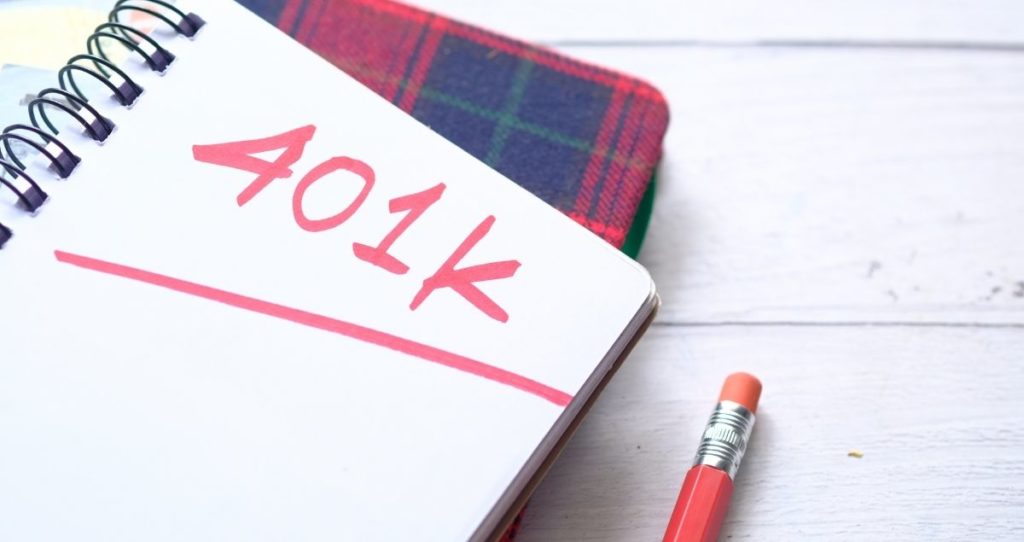What happens to 401(K) money that is not vested when you quit? Having a 401(k) plan comes with the possibility of getting a match contribution from your employer. Typically, most employers match employee contributions dollar to dollar up to 2% to 6% of employees’ gross incomes. Before claiming your employer’s match to the plan, you will need to be vested based on the company’s vesting schedules. For example, your company might require 4 years of service to be fully vested. If you quit your job or get laid off before you are fully vested, you will lose your 401(k) balance that is not vested. The forfeited 401(k) balance stays with the company which can then use it to fund other employees’ 401(k) plans.
If your employer terminates a 401(k) plan, however, the employer will vest every employee in the plan.
Here is everything you need to know about an unvested 401(k) balance that is not vested when you quit your job.
What does it mean to be vested in a 401(k)?
Contributions to your 401(K) plan come from two different sources. The first contribution comes from your wages through payroll deduction and it is always 100% vested immediately.
The second contribution to the plan comes from your employer and it is usually subjected to vesting schedules. Until you are fully vested, you will not claim your employer match to the plan. The term vested refers to “ownership”. Being fully vested means you own all your employers match the plan and you can take all that balance with you when you quit the job.
Depending on your employer’s vesting schedules, you can either get vested immediately, gradually, or after a certain date. For example, your company can require you to work for a year before you are fully vested. Other employers have a system where you gradually earn the employer match in small percentages until you are fully vested. For example, you can get vested at 50% after one year of service and 100% after 2 years of service.
In the event you quit your job before you are fully vested, you will forfeit the unvested 401(k) balance.
What happens to 401(K) money that is not vested
If you quit your job before you are fully vested, you will lose an unvested 401(k) balance to the plan. It will all depend on your company’s vesting requirements. Generally, the unvested amount will be forfeited and that balance will stay with the company. Your company will then use your unvested 401(k) money when you quit to support other employees’ 401(K) accounts.
In case the company terminates its 401(K) program, however, the unvested funds will not go back to the employer. It is no longer one or two employees leaving their jobs before they are fully vested. It is the employer who is choosing to terminate the 401(K) program. For this reason, the company will be required to vest every employee who is affected by this decision.
What if the company lays off a lot of employees at once without terminating the 401(K) program? In this case, what happens to 401(K) money that is not vested?
There are times when an employer can lay off a lot of employees at once without terminating its 401(K) program. According to Forbes, a massive layoff will cause a partial termination of the 401(K) program. Partial termination occurs when the company experiences an employee turnover ratio of at least 20%. So, laying off more than 20% of employees will result in a partial termination of the 401(K) program. As a result, everyone who has been affected by this massive termination must be fully vested.
In other words, if you are part of a massive layoff that affects at least 20% of the company’s workforce, you will not lose the unvested 401(k) balance. The company will vest everyone who is affected by the layoff and you will take the money with you.
What happens to unvested 401(k)money when you quit?
If you quit your job, you will forfeit the unvested percentage of your employer’s match to the account. That is the money will be forfeited and it will stay with your company.
For example, if you have a gradual vesting schedule of 20% after one year, 50% after two years, 75% after 3 years, and 100 after 4 years of service, leaving before working 4 years will result in losing a portion of your employer match to the plan. From this example, leaving after working in the company for 3 years will result in forfeiting 25% of your employer’s match to the plan. This is because, by the end of 3 years, you will be vested at 75%.
To avoid losing your 401(k) money that is not vested, stay with the company until you are fully vested. If you don’t know when you are fully vested or how much on your 401(k) balance is vested, talk to your HR or 401(k) plan administrator.
Related: What happens to your 401(K) when you quit your job?
What happens to a 401(k) balance that is not vested when you get laid off
What if you did not quit your job but got laid off? Even if it was not your fault to lose your job, you will still lose the unvested 401(k) balance. The company will still keep that money and use it to fund other accounts in the plan. If there is a massive layoff of more than 20%, it will trigger a partial termination of the plan and everyone affected will be fully vested. However, if the company hires some of these employees back and lowers its turnover ratio before the end of the year(when the percentage is calculated), you may lose the unvested percentage.
What to Do With Your 401(k) if You Get Laid Off or change jobs
Let’s assume that you have been saving money in your 401(K) plan and your employer matched your contributions. All of a sudden, you want to pack and leave or the company says, “We are sorry, we can no longer afford to keep you around.”
What should you do with your 401(K) plan after leaving your job?
Leaving your job does not mean you will lose your 401(K). The contributions you made to the account are yours to keep 100% and your employer match might be yours assuming that you are fully or partially vested. What should you do with your 401(k) plan when you leave your job?
Here are your options for your 401(K) plan after leaving your job
- Leave the plan with your former employer. The easiest thing to do after leaving your job is to keep your 401(k) plan with your former employer. The downside of this strategy is that you will not make further contributions to the account which will impact its growth. Additionally, if your account is under $5,000, your former employer can remove you from the plan and send you a paycheck.
- Rollover the account into an Individual retirement account (IRA). The smartest way to proceed with your 401(K) balance when you quit or get laid off is to roll over the money into an IRA. With this strategy, you will keep the tax benefits you had with your 401(K) by the time of transfer.
- Roll over your 401(K) balance into your new 401(K) plan. If you end up getting a new job with a 401(K) plan, you can simply have your old 401(K) rolled over into your new 401(K) and keep all tax benefits.
- Cash-out. Yes, you can cash out your 401(k) plan after leaving the job. Although this is an option that is on the table, you should never cash out your 401(K) or any other retirement account before reaching retirement age. Cashing out your 401(K) when you quit your job will be considered an early withdrawal if you are not 59.5 years old. For this reason, you will pay a 10% penalty plus income tax on your distribution.
How much can you contribute to a 401(k) plan in 2024?
The contribution limits to a 401(k) plan in 2024 are $23,000 or $30,500 if you are 50 or older. For 2023, you can contribute up to $22,500 or $30,000 if you are 50 or older.
More retirement tips
What happens to your 401(K) when you quit your job?
How many IRAs can you have in 2024?
8 benefits of an IRA: Why you need to invest in an IRA








